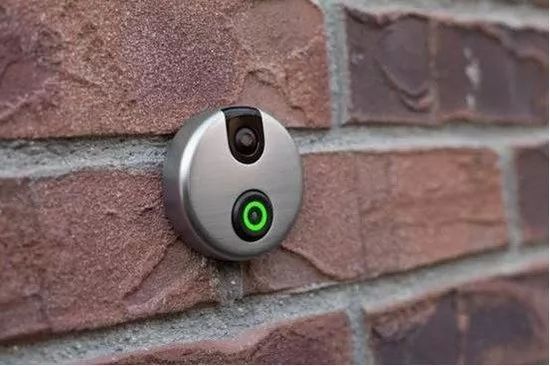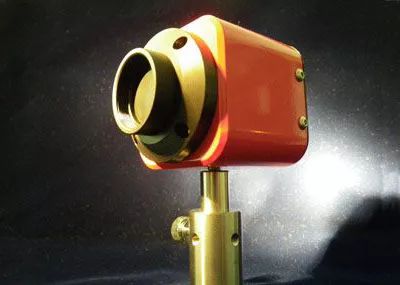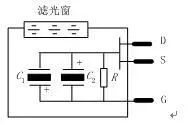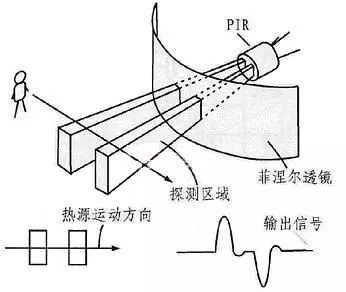
The pyroelectric infrared sensor is a sensor with significant application potential. It can detect infrared radiation emitted by humans or certain animals and convert it into an electrical signal output. It is a new type of highly sensitive infrared detection component that can detect changes in the infrared energy radiated by the human body in a non-contact manner and convert it into a voltage signal output. By amplifying the output voltage signal, it can drive various control circuits, such as power switch control, anti-theft, and fire alarm systems.

As early as 1938, someone proposed using the pyroelectric effect to detect infrared radiation, but it did not receive much attention. It was not until the 1960s, with the rapid development of laser and infrared technology, that research on the pyroelectric effect and the development of pyroelectric crystal applications were promoted.
Pyroelectric Effect
When certain crystals are heated, equal amounts of opposite charges will be generated at both ends of the crystal. This phenomenon of polarization caused by thermal changes is known as the pyroelectric effect.
Typically, the bound charges produced by the spontaneous polarization of the crystal are neutralized by free electrons attached to the surface of the crystal from the air, which prevents the spontaneous polarization dipole moment from being expressed. When the temperature changes, the center of positive and negative charges in the crystal structure shifts relatively, causing a change in spontaneous polarization, resulting in charge depletion on the crystal surface, which is proportional to the degree of polarization.

Crystals that can produce the pyroelectric effect are called pyroelectric materials or pyroelectric components. Common materials for pyroelectric components include single crystals (such as LiTaO3), piezoelectric ceramics (such as PZT), and polymer films (such as PVFZ).
The pyroelectric sensor utilizes the pyroelectric effect, which is a temperature-sensitive sensor. It consists of ceramic oxides or piezoelectric crystal components, with electrodes formed on both surfaces of the component. When there is a temperature change of ΔT within the monitoring range of the sensor, the pyroelectric effect will produce charge ΔQ on the two electrodes, resulting in a weak voltage ΔV between the two electrodes. Due to its extremely high output impedance, a field-effect transistor is used in the sensor for impedance transformation. The charge ΔQ generated by the pyroelectric effect will combine with ions in the air and disappear; that is, when the ambient temperature remains stable and unchanged, ΔT=0, the sensor has no output. When a human enters the detection zone, the temperature difference between the human body and the ambient temperature generates ΔT, resulting in ΔT output; if the human remains still after entering the detection zone, there is no change in temperature, and the sensor also has no output. Therefore, this type of sensor detects the activity of humans or animals.

Structure of Pyroelectric Infrared Sensor
The shape of a typical pyroelectric human infrared sensor is shown in the figure. The D pin and S pin are the lead ends of the drain and source of the internal field-effect transistor, respectively, while the G pin is the grounding lead end of the internal sensitive component. Since S and G are floating, a resistor R should be connected between them during use to output the sensing signal. To enhance anti-interference capability, a capacitor C should be connected in parallel with this resistor. The sensor consists of a sensitive unit, a filter window, and a Fresnel lens.

Sensitive Unit

The equivalent circuit of the sensitive unit is shown in the figure. The internal sensitive material is made into very thin sheets, each with an electrode connected to each of its two opposite sides. An equivalent small capacitor is formed at the ends of the electrodes, as these two small capacitors are made on the same silicon wafer and can self-generate polarization, producing opposite positive and negative charges at the ends of the capacitors. However, the polarity of these two capacitors is opposite and in series. This is precisely the unique design of the sensor, giving it exceptional anti-interference capabilities.
When the sensor does not detect infrared signals emitted by the human body, the polarization generated by C1 and C2 produces opposite and equal positive and negative charges at the ends of the capacitors, and since these two capacitors are in opposite series, the positive and negative charges cancel each other out, resulting in no current in the circuit and no output from the sensor.
When a human is stationary within the detection area of the sensor, the infrared energy incident on C1 and C2 is equal, achieving balance; the opposite polarities and equal energy of the photocurrent cancel each other out in the circuit. The sensor still has no signal output. Similarly, under lighting or sunlight, due to the very slow speed of sunlight movement, the infrared energy incident on C1 and C2 can still be seen as equal, and they cancel each other out in the circuit; additionally, since the sensor’s response frequency is very low (generally 0.1~10Hz), the sensor is not sensitive to visible light and most infrared radiation.
When the ambient temperature changes and causes the temperature of the sensor itself to change, the opposite polarities and equal energy of the photocurrent still cancel each other out in the circuit, resulting in no output from the sensor.
Only when the human body moves, causing different polarization charges in the two equivalent capacitors of the sensor’s sensitive unit, will it output an electrical signal. Therefore, this type of sensor is sensitive only to the movement or activity of the human body, not to stationary or very slowly moving bodies, and it has good anti-interference capabilities against visible light and most infrared radiation.
Filter Window
It is made of a thin glass sheet coated with multiple layers of filter film, which effectively filters out infrared radiation outside the 7.0~14μm wavelength range. For example, the SCA02-1 has a penetration rate of 70% for infrared radiation at a wavelength of 7.5~14μm, dropping to 65% at 6.5μm and sharply decreasing to 0.1% at 5.0μm, effectively ensuring selectivity for human infrared radiation.
This is because the infrared radiation emitted by an object is strongest at a wavelength that meets the relationship λm×T=2989(μmk) (where λm is the maximum wavelength, and T is the absolute temperature). The normal body temperature of a human is 36~37.5℃, which corresponds to 309~310.5K, and the strongest infrared wavelength is λm=2989/(309~310.5)=9.67~9.64μm, with a central wavelength of 9.65μm. Therefore, the strongest infrared wavelength radiated by the human body falls exactly within the response wavelength (7~14μm) of the filter window. Thus, the filter window can effectively allow infrared radiation from the human body to pass through while maximizing the blockage of infrared radiation from sunlight, lamp light, etc., to avoid interference.
Fresnel Lens
Without using a Fresnel lens, the detection radius of the sensor is less than 2 meters; it can only reach its maximum effectiveness when used with a Fresnel lens. When paired with a Fresnel lens, the detection radius of the sensor can reach up to 10 meters.

Working Principles and Characteristics of Passive Pyroelectric Infrared Sensors
In nature, any object above absolute temperature (-273K) will emit infrared spectra, and different temperature objects will emit infrared energy at different wavelengths, thus correlating infrared wavelength with temperature. Moreover, the magnitude of the radiation energy is related to the temperature of the object’s surface.

The human body maintains a constant temperature, generally at 37 degrees, thus emitting infrared radiation at a specific wavelength of around 10 microns. The passive infrared detector works by detecting the infrared radiation emitted by the human body. The infrared radiation is focused onto the pyroelectric element after being enhanced by the Fresnel filter, and this element loses its charge balance upon receiving changes in the human body’s infrared radiation, releasing charge outward, which can then generate an alarm signal after detection and processing. The passive infrared detector includes two pyroelectric elements that are either series or parallel connected. The polarization directions of the two electrodes are exactly opposite, so the background radiation has nearly the same effect on the two pyroelectric elements, causing their pyroelectric effects to cancel each other out, resulting in no signal output from the detector.
Advantages and Disadvantages of Passive Pyroelectric Infrared Detectors:
Advantages:
1. Passive infrared sensors do not emit any type of radiation themselves, making them discreet;
2. The device has very low power consumption;
3. It is low-cost.

Disadvantages:
1. The signal amplitude is small and easily interfered with by various heat sources and light sources;
2. Passive infrared has poor penetration, and the infrared radiation from the human body is easily blocked and not easily received by the detector;
3. It is easily interfered with by radio frequency radiation.
4. When the environmental temperature is close to the human body temperature, the detection and sensitivity significantly decrease, sometimes causing temporary failure.
5. The primary detection direction of passive infrared detectors is lateral movement, with poor detection ability for radial movement.
Applications of Pyroelectric Infrared Sensors
Pyroelectric crystals have been widely used in infrared spectrometers, infrared remote sensing, thermal radiation detectors, etc. In addition to being applied in automatic switches in hallways and anti-theft alarms, they are used in many more fields. For example: air conditioners and water dispensers that automatically shut down when a room is unoccupied; circuits in televisions that can determine when no one is watching or when the audience has fallen asleep and automatically turn off; monitors or automatic doorbells that turn on when a person approaches; cameras or digital cameras that automatically record the activities of animals or humans; …
Automatic Doors
In the field of automatic doors, the application of passive human pyroelectric infrared switches is very widespread, as they are stable in performance and can work reliably over the long term, making them popular among users. This switch primarily consists of a human pyroelectric infrared sensor, signal processing circuit, control and execution circuit, and power circuit.

The pyroelectric infrared automatic door primarily consists of an optical system, a pyroelectric infrared sensor, signal filtering and amplification, signal processing, and the automatic door circuit. The Fresnel lens can focus the infrared radiation emitted by the human body onto the pyroelectric infrared detector while also creating alternating high-sensitivity areas and blind spots of infrared radiation to meet the requirement of the pyroelectric detection elements for continuously changing signals; the pyroelectric infrared sensor is the core device in alarm design, converting the infrared signals from the human body into electrical signals for use by the signal processing part; signal processing mainly involves amplifying, filtering, delaying, and comparing the weak electrical signals output by the sensor, laying the foundation for the realization of functions.
Body Sensing Lamps

Smart air conditioners can detect whether there are people in the room and whether they are stationary or moving, automatically controlling the on/off, cooling (heating) capacity, and room temperature to achieve energy-saving and user-friendly objectives.